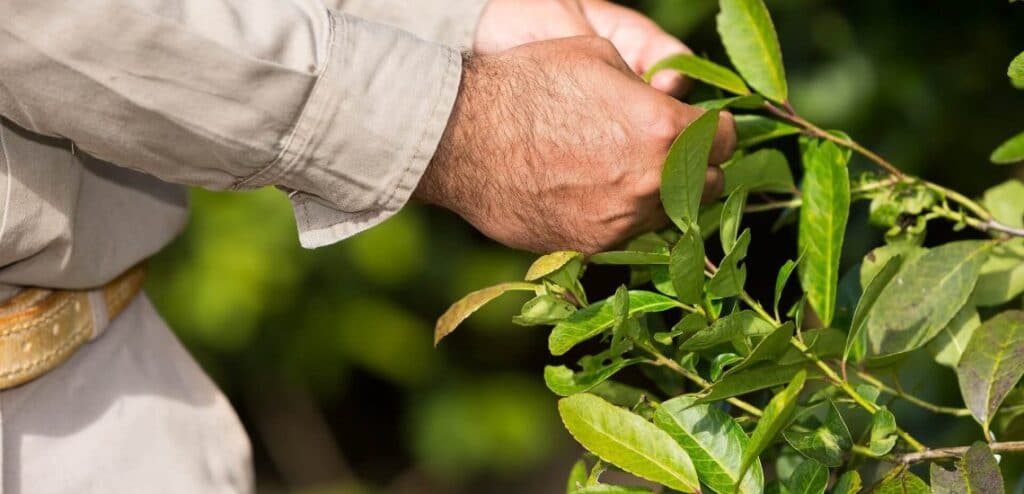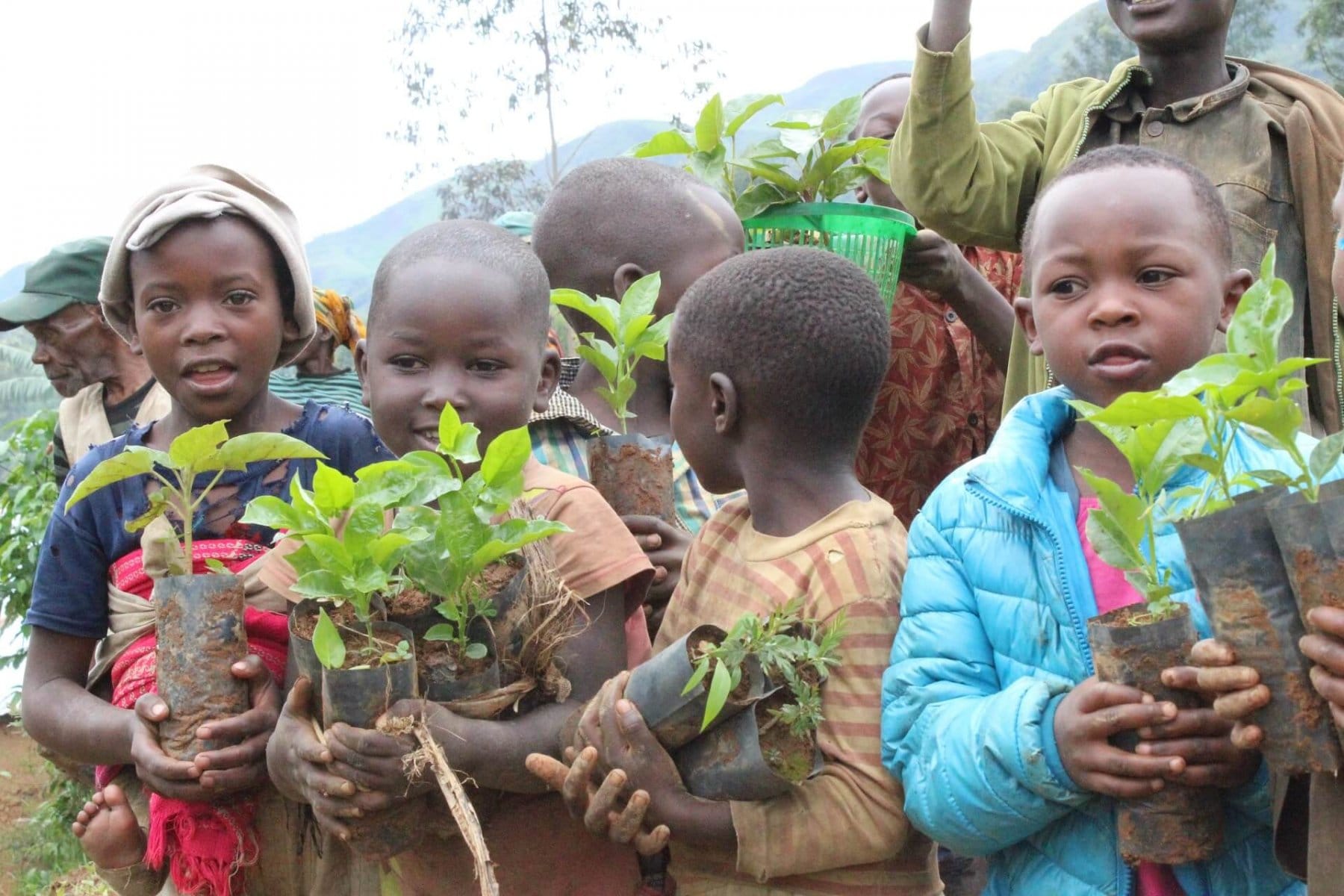Nature restoration for green recovery and beyond: principles and best practices from BirdLife’s experience

Through our world-leading science, unique local-to-global policy reach and extensive on-ground conservation work around the globe, BirdLife is uniquely placed to guide on why and how we need to restore nature to build back better from COVID-19, tackle the climate and biodiversity crises, and improve health and well-being, as part of wider and long-term efforts to achieve an equitable, carbon-neutral, nature-positive future for all.
By Dr Poshendra Satyal, Global Forest Policy Coordinator
The current, devastating pandemic has brought into sharp focus how our mismanagement of nature is not only causing ecological breakdown and exacerbating climate change, but driving the emergence of zoonotic diseases. As the recently released joint IPBES and IPCC report has highlighted, we urgently need demonstrable solutions which tackle the climate crisis, biodiversity loss and societal challenges together.
Nature restoration is critical to this effort, and therefore a key priority for BirdLife, and with the launch of the UN Decade on Ecosystem Restoration in June 2021 there is no better time to work together to prevent, halt, and reverse ecosystem degradation. We have the potential to develop a global restoration movement aligning with achieving the climate targets of the Paris Agreement, the Sustainable Development Goals, and proposed targets of the Global Biodiversity Framework to support an equitable, carbon-neutral and nature-positive future. This must be central to a green and just post-COVID economic recovery, helping to create the transformational change we desperately need.
By providing solutions to address the environmental crisis, nature restoration can help recover invaluable ecosystem services such as water purification and storage, prevention of storm surges and floods, enhanced pollination, and reduced soil erosion. This is critical in reducing social inequalities in the face of biodiversity loss and climate change and for supporting health and well-being. Restoration projects can also stimulate major economic growth in terms of job creation, boosting of sectors such as tourism, and improvements in food and water security.
To be transformational, such restoration needs to be sustained and done at scale. Pandemic recovery strategies and associated funds are key entry points for laying the groundwork for longer term mainstreaming of nature restoration as a mutually reinforcing nature, climate and sustainable development priority in mid-term and long-term policy and finance strategies, both at the national level and globally.
To place restoration at the heart of a global green and just recovery, we first need to know what successful restoration looks like, and how best to do it. The work of BirdLife and our Partners on the ground around the world can provide important lessons for wider best practice. Here we describe eight key principles for effective and equitable nature restoration.
Image credit: © Pablo Rodriguez Merkel
1. Focus on quality as well as quantity to achieve multiple benefits for nature, climate and people
Ecosystem restoration, when implemented effectively and sustainably, contributes to protecting birds and biodiversity, improving human health and wellbeing, increasing food and water security and quality, delivering goods, services, and economic prosperity, and supporting climate change mitigation, resilience and adaptation. For this to occur, it is not enough to simply track restoration in terms of ‘quantity’ (such as the size of a restored landscape or seascape, or the number of trees planted) – we must also focus on quality.
Our efforts should thus focus on enhancing ecological integrity (aiming to restore a site’s biological and ecological attributes to or close to its natural state) and connectivity (restoring habitat corridors or a network of sites to sustain wide-ranging or migratory species and wider ecological processes) across a range of ecosystems – whether terrestrial, freshwater, coastal or marine.
To do this, we need to focus on both outcomes (i.e. what we want to achieve) and process (i.e. what to do) of restoration. The outcomes that we want to achieve through restoration can be summarised in terms of the 4Cs: expanding ecosystem cover (i.e. the size of the ecosystem), improving ecosystem condition (this covers ecosystem integrity, and biodiversity as a component of this) and ecosystem carbon, and supporting the communities that depend on or benefit from that ecosystem.
2. Do it the right way
In order to achieve quality outcomes for nature, climate and people, restoration must be done in the right way or process. For example in the context of forest landscape restoration, restoration should be carried out in line with what we call the four Rs: restoring the right trees (i.e. replanting or allowing natural regeneration of native trees including rare and endangered species) in the right place (i.e. prioritising connecting and expanding standing natural forest rather than ‘afforestation’ – planting trees, often in monoculture plantations, in ecosystems where they are not naturally found), with the right stakeholders (working with and for indigenous peoples and local communities) and the right means (i.e. considering capacity, funding and long-term sustainability).
3. Put people at the centre of restoration planning, implementation, and monitoring
Equitable representation and participation, as well as more effective restoration in the long run, can be achieved through the three Es, which relate to how we should work: we need to engage, enable and empower a variety of stakeholders at multiple scales and fully incorporate available scientific, local and Indigenous knowledge (including citizen science) into restoration efforts.
Restoration thus needs to be carried out with and for local people to make it both equitable and effective. For this, we need to ensure more meaningful involvement, particularly of indigenous peoples and local communities. As local communities differ, we also need to consider the dynamics of social differences such as class, caste, ethnicity, religion, culture, gender, age and spatial distribution, and the way it can impact both the processes and outcomes of restoration.
To ensure equitable representation and ‘full and effective’ participation of various stakeholders and social groups in restoration efforts, we need to ask who participates, when do they participate (ensuring participation throughout, right from the beginning of restoration planning to implementation and monitoring), and how they participate (focusing on the quality of participation to ensure that participation is an empowering experience and local stakeholders are genuinely able to influence decision-making).

4. Track progress through concrete targets and measurable indicators
The fourth principle is about being able to track progress, and for this we need a robust monitoring framework. We need to plan and undertake monitoring and evaluation and incorporate adaptive management and learning throughout the restoration process. In that sense, ecosystem restoration needs to be assessed against clear goals and objectives using SMART (Specific, Measurable, Achievable, Relevant, and Time-bound) indicators. We also need to recognise and assess any gap between restoration commitments and implementation, including commitments on funding and resources.
A range of monitoring tools and methods can be used to identify, map and track the recovery progress. These include remote-sensing and community-based monitoring, using data from satellites, smart-phone applications (e.g. CyberTracker), camera traps or drones, shared and interpreted via platforms (e.g. Global Forest Watch) which enable online data sharing, coding and mapping visualisations (e.g. our own Asia-Pacific Forest Governance project’s forest landscape dashboard).
5. Think global, act local
Restoration must be undertaken at every scale and ecosystem worldwide (from global to regional to local and vice versa), though priorities and opportunities vary depending on the desired outcomes. As we do not have endless money for restoration, we need to set global priorities based on benefits to nature, climate, and people, and at the same time hone down these to local realities.
While restoration actions must be tailored to the local context, at the same time we need to consider larger landscapes or seascapes and socio-ecological and cultural settings in order to achieve the transformative change that is needed and support the global recovery of nature so that we are nature-positive by 2030.
6. Integrate across sectors and society
There is also a need to mainstream policies and governance so that restoration is carried out across society and different sectors. Most importantly, we need to scale up funding and finance from both the public and private sector: restoration and green recovery on a global scale requires sustained investments to embed practice but more than pays for itself in the long run.
7. Prioritise actions: retain and then restore natural ecosystems, and address degradation drivers
Ecosystem restoration is part of a continuum of conservation and nature-based solutions that environmental organisations like BirdLife and its Partners are undertaking and advocating. Therefore, we must prioritise these actions, and be clear where restoration fits in.
The highest priority – and the cheapest, most effective action we can take – is to first retain and restore remaining carbon- and biodiversity-rich ecosystems. Then, in conjunction with this, we need to focus on restoring fragmented and degraded ecosystems, recovering ecological integrity and connectivity – either by natural regeneration or active restoration, as needed.
We also need to address the drivers of ecosystem degradation, safeguard or sustainably manage non-protected ecosystems (including agricultural landscapes and agroforestry) and reforest/afforest where feasible and necessary, following the 4Rs, 4Cs and 3Es principles as highlighted earlier.
8. Sustain efforts
Finally, the outcomes and benefits of restoration must be sustained beyond the UN Decade’s 2030 timeline (in terms of finance, capacity, legal reforms, and tenure) to ensure nature’s full recovery by 2050, as part of a truly equitable, carbon-neutral and nature-positive world. By delivering multiple benefits and sustainable income streams through high quality restoration, we can retain ecosystems for future generations, tackling the biodiversity and climate crises, and supporting livelihood needs.
Download our two-page briefing on nature restoration for green recovery and beyond here.
To learn more about the work of the BirdLife Partnership on transforming landscapes and communities through nature restoration, watch our webinar below.
Stay up to date
Sign up to receive the latest bird conservation news. You’ll also receive updates about our projects, science and other ways to get involved including fundraising.
Thank you for your support, we are committed to protecting your personal information and privacy. For more information on how we use your data, please see our Privacy Policy. You can unsubscribe from emails at any time by using the link in the footer of any email from us.

